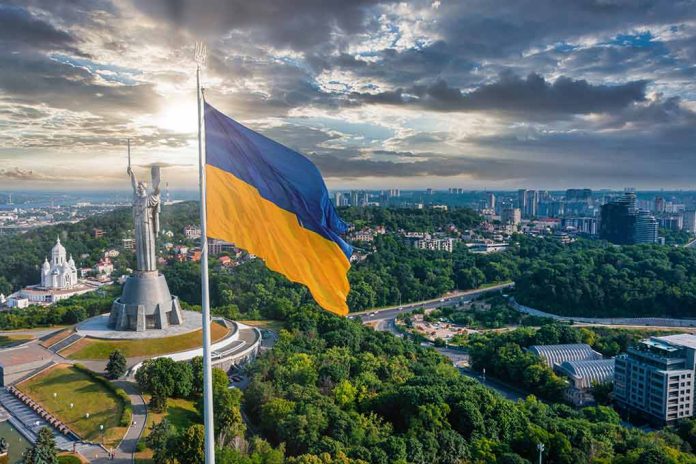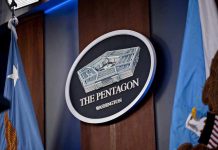
Putin deploys his personal elite guard to the Ukrainian frontlines as Russian forces struggle to capture Chasiv Yar despite a year of failed attempts.
Key Takeaways
- Russia has deployed its elite FSB Presidential Regiment—normally tasked with ceremonial duties—to the frontline in Chasiv Yar, signaling escalation and possible desperation.
- The regiment now supports the 98th Airborne Division after Russian forces faced over a year of staunch Ukrainian resistance in the strategically important Donetsk region.
- Ukrainian military officials report that the Presidential Regiment consists of “top-level specialists” conducting “highly precise, deliberate actions” in intense combat situations.
- Military analysts believe this unusual deployment aims to intimidate Ukraine and the West while projecting an image of Russian elite military capability.
- Despite the deployment of these elite forces, the Institute for the Study of War assesses that Russian forces still lack the capacity for significant battlefield advances.
Ceremonial Guards Turn Combat Troops in Eastern Ukraine
In a major shift of military strategy, Russia has deployed its FSB Presidential Regiment to the frontlines in Chasiv Yar, eastern Ukraine. This elite unit, which normally serves ceremonial functions at the Kremlin and reports directly to President Vladimir Putin himself, has joined combat operations alongside the 98th Airborne Division. The deployment represents an extraordinary escalation in Russia’s efforts to capture the strategically vital town in Ukraine’s Donetsk region, where Russian forces have been stalled for over a year despite repeated offensive operations.
“The 98th Airborne Division is positioned opposite us—this is a very strong enemy. And in recent weeks, a new force has been added that significantly bolsters them. This is the separate FSB Presidential Regiment. These are top-level specialists. We’re now facing extremely intense combat and highly precise, deliberate actions,” said Ivan Petrychak.
The Presidential Regiment’s primary duties typically include honor guard services at state functions and security for the Kremlin, the Eternal Flame at the Tomb of the Unknown Soldier, and high-ranking Russian officials. Military analysts note that deploying such a prestigious unit to active combat indicates significant challenges in Russia’s conventional military operations. The regiment is estimated to be approximately the size of a motorized rifle brigade, composed of both conscripts and contract soldiers, representing a substantial force commitment to the Chasiv Yar theater.
Strategic Significance and Battlefield Reality
Chasiv Yar sits on high ground overlooking key transportation routes in Donetsk oblast, providing Ukrainian forces with a tactical advantage that has allowed them to inflict heavy casualties on Russian troops attempting to advance. The difficult terrain and well-established Ukrainian defensive positions have frustrated Russian offensive operations for months. Despite claims of a ceasefire in other areas, Ukrainian military officials confirm that combat operations in Chasiv Yar have continued unabated with artillery strikes and drone attacks.
“There was no talk of any ceasefire, at least not on our section of the front. These past three days have been no different from the previous months,” said Ivan Petrychak.
The deployment comes as reports indicate many Russian special forces from the “Akhmat” unit are recovering from lung damage sustained during a mission in Ukraine’s Kursk region. Lieutenant General Apti Alaudinov confirmed that most members of the “Aida” detachment remain under medical treatment, potentially creating a capability gap that the Presidential Regiment has been tasked with filling. This reshuffling of elite units suggests Russia is scraping the bottom of its readily available specialized forces barrel as casualties mount across multiple fronts.
Russia has reportedly deployed a largely ceremonial regiment of the Federal Security Service (FSB) to the frontline in Donetsk Oblast, likely in an effort to generate fear of more rapid future Russian advances. ⬇️
▪️ Russian state media reporting suggests that elements of the… https://t.co/IrPLtTtd8Y pic.twitter.com/y7OTfwXStZ
— Institute for the Study of War (@TheStudyofWar) May 13, 2025
Propaganda Value Versus Military Reality
Military analysts at the Institute for the Study of War (ISW) suggest that beyond tactical considerations, the deployment of the Presidential Regiment serves propaganda purposes for the Kremlin. By committing this prestigious unit to combat, Russia aims to project strength and resilience in its military operations while simultaneously attempting to intimidate Ukrainian forces and Western allies. The unusual deployment marks the first observed instance of the Presidential Regiment’s participation in the Ukraine conflict since Russia’s full-scale invasion began.
“The Russian military command’s decision to deploy the Presidential Regiment to fight in Ukraine is likely part of a larger Russian effort to intimidate Ukraine and the West through intensified battlefield activity and portray Russian forces as elite and fully capable of achieving significant successes in Ukraine shortly,” stated The Institute for the Study of War (ISW).
Despite this apparent show of force, the ISW continues to assess that Russian forces lack the capability for significant battlefield advances in the immediate future. Fighting in the Donetsk and Luhansk regions, which Russia has sought to fully control since 2014, remains intense but largely static along established front lines. The Presidential Regiment’s deployment appears more symbolic than decisive, as Russia continues to struggle against determined Ukrainian resistance despite its overwhelming numerical advantage and artillery superiority.
Implications for the Conflict’s Future
As Russian forces reorient for a renewed push into Chasiv Yar with elite units, the broader diplomatic context remains complex. Ukrainian President Volodymyr Zelenskyy has proposed face-to-face peace talks with Putin in Istanbul, though the Kremlin has not confirmed Putin’s attendance. The fighting in Donetsk is expected to intensify as Russia continues its push for territorial control, with the Presidential Regiment’s deployment representing a significant escalation in the quality of forces committed to the effort.
“The Russians are struggling to take Chasiv Yar, so they were forced to bring in their most capable forces for urban combat,” said Ivan Petrychak.
This unusual deployment of Putin’s personal guard regiment demonstrates both Russia’s determination to achieve battlefield success and its growing desperation as conventional military units fail to make significant progress. The commitment of such prestigious forces to frontline combat operations reflects a calculated risk by Russian military leadership, betting that these elite troops can achieve what regular forces could not over the past year of intensive combat operations. Whether this gamble will pay off remains to be seen as Ukrainian forces continue to resist Russian advances across the Donetsk region.



